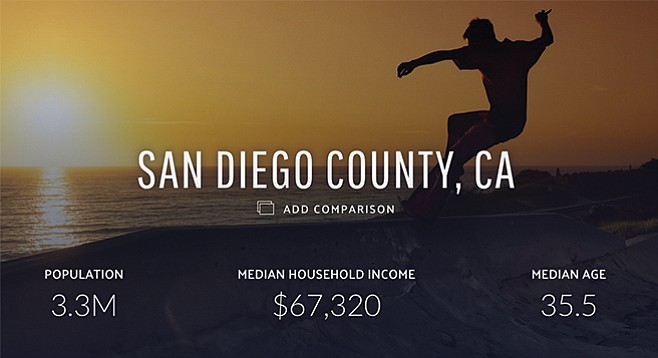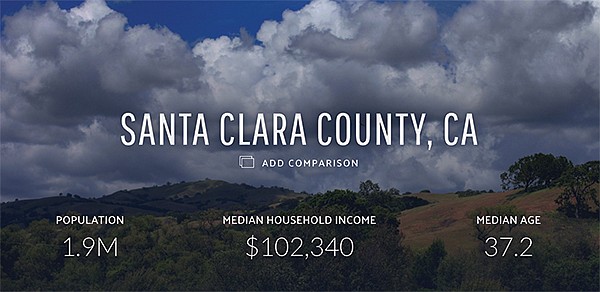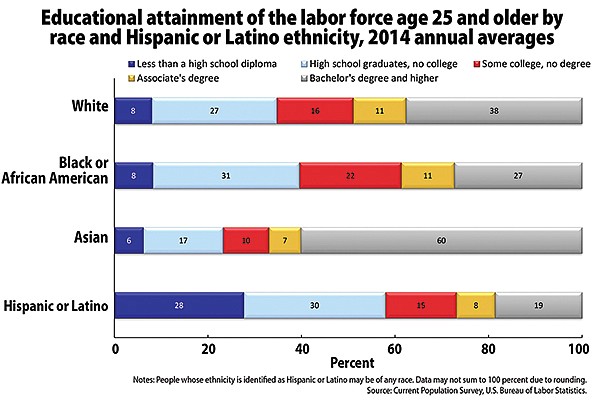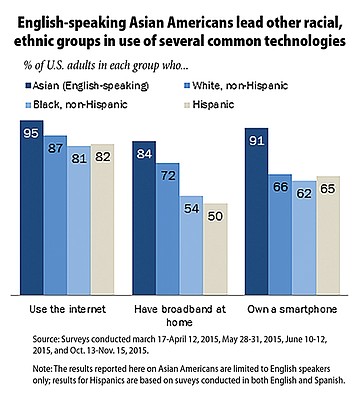 Facebook
Facebook
 X
X
 Instagram
Instagram
 TikTok
TikTok
 Youtube
Youtube

What makes the Silicon Valley economy tick and other California metro areas — San Diego, Los Angeles, and San Francisco — lag behind? One factor is that Silicon Valley recruited engineering talent as a result of a historical accident. In a sense, the bad bile and choleric personality of a famous physicist launched Silicon Valley.

San Diego should have been so lucky. But San Diego became one of the three biotech centers for nonaccidental reasons: talent developed by universities and biomedical institutions.

The good economic news for Silicon Valley — and the not-so-good news for the rest of the state — comes from the California State Board of Equalization. It has come out with economic statistics that show how Silicon Valley seems to be running away from the rest of the state in economic productivity.

The most disquieting statistic is real (inflation-adjusted) total economic output per person in 2015 (the most recent data available). The per-person economic output for Silicon Valley (or the San Jose–Sunnyvale–Santa Clara metro area) is a whopping 199 percent of the California average. The San Francisco–Oakland metro area is second at 144 percent, Los Angeles metro is third at 110 percent, and San Diego fourth at 106 percent. (San Diego’s neighbor El Centro is far down the list at 49 percent.)
Since 2010, Silicon Valley economic output has grown by 37.6 percent — in first place in the state. Economic growth of the San Diego metro area (the county) over the same years was 23.2 percent.
Other economic statistics show Silicon Valley well ahead of San Diego. Median household income in the valley is $102,340 — whipping San Diego’s $67,320. The median price of San Diego homes is around $500,000. Silicon Valley’s is double that — about $1 million, highest in the nation. Monthly rents in the valley are a stunning $3449, according to Zillow.com. That’s higher than San Francisco’s ($3354), Los Angeles’s ($2642), and San Diego’s ($2452).
The overall cost of living in Silicon Valley is 40 percent above the nation’s; San Diego’s is 29.1 percent higher. The valley’s higher incomes are not wiped out by living costs.
The big reason for the valley’s prosperity is that 30 percent of the workers are in technology, which features higher incomes. In San Diego, 10 percent are in tech and also enjoy significantly higher incomes than employees of other industries.
Silicon Valley has an ethnic advantage. In Santa Clara County (the heart of Silicon Valley) Asians are almost as populous as whites: 32.6 percent Asian and 34.7 percent white. In San Diego County, only 11.1 percent of the population is Asian.
Almost 60 percent of software workers in Silicon Valley are Asian. By 2012, half of the tech workforce in the combined areas of Silicon Valley and San Francisco were Asian. One reason for that is the presence of H-1B visa holders, who are brought in by tech companies and account for a significant number of tech workers. However, they average only $75,000 a year in pay and are almost entirely under 35 years old, so they actually bring down the average salaries of Asian tech workers.
In both Santa Clara and San Diego counties, median household income for Asians is about 8 or 9 percent higher than that enjoyed by whites. Asians tend to have a greater dedication to hard work and education than whites do and may have a greater aptitude for the skills that are so important in technology.
The Pew Research Center conducted four surveys in 2015. Conclusion: “English-speaking Asian Americans adopt a number of common technologies at rates that exceed the rest of the population, including whites,” said Pew.
Two years ago, 95 percent of English-speaking Asians used the internet, versus 87 percent of whites, according to Pew data. Similarly, 84 percent of English-speaking Asians had broadband at home, versus 72 percent of whites. And 91 percent of English-speaking Asians owned a smartphone then, compared with 66 percent of whites.
“One reason English-speaking Asian Americans are adopting these technologies at higher rates may be their high levels of educational attainment and household income,” said Pew. According to the U.S. Bureau of Labor Statistics, in 2014 a full 60 percent of Asians had a bachelor’s degree or higher, versus 38 percent of whites.
Until after World War II, Silicon Valley was essentially a farming area. But Stanford University was devoted to providing local employment for its graduates and in 1946 set up Stanford Research Institute, which later became SRI International. In 1951, the university set up Stanford Industrial Park, which did a lot of military tech work. Still, the valley was hardly a tech center at the time.
Then the valley got a break. In 1956, William Shockley, a major creator of the transistor at New Jersey’s Bell Labs and a Nobel Prize winner, moved to Mountain View, California, to be near his ailing mother. He founded Shockley Semiconductor Laboratory and recruited young geniuses from the East to join his company. But Shockley was autocratic and paranoid, shouting at employees and forcing them to take lie-detector tests. One day, eight of his brainy recruits — whom he called the “traitorous eight” — walked out and formed Fairchild Semiconductor in Silicon Valley. Over the next two decades, Fairchild spawned more than 65 new companies. Two of the traitorous eight formed Intel, which in 1971 created the world’s first microprocessor. Silicon Valley could not be stopped. Boston, home of Harvard and the Massachusetts Institute of Technology, really should have been the tech hub, but Silicon Valley won the race.
Silicon Valley’s tech development is similar to San Diego’s success in biotech. San Diego is a biotech center, along with Boston and San Francisco, and other metro areas can’t crack or supplant the top three. The University of California San Diego and medical research institutions Scripps Research Institute, Salk Institute, Sanford Burnham Prebys Medical Discovery Institute, and the Torrey Pines Institute for Molecular Studies served as a talent breeding ground that propelled San Diego to the forefront. In recent years, Florida convinced three San Diego biomedical institutes to put campuses there, but the experiment flopped. That state didn’t have the scientists to get those institutes moving forward.


What makes the Silicon Valley economy tick and other California metro areas — San Diego, Los Angeles, and San Francisco — lag behind? One factor is that Silicon Valley recruited engineering talent as a result of a historical accident. In a sense, the bad bile and choleric personality of a famous physicist launched Silicon Valley.

San Diego should have been so lucky. But San Diego became one of the three biotech centers for nonaccidental reasons: talent developed by universities and biomedical institutions.

The good economic news for Silicon Valley — and the not-so-good news for the rest of the state — comes from the California State Board of Equalization. It has come out with economic statistics that show how Silicon Valley seems to be running away from the rest of the state in economic productivity.

The most disquieting statistic is real (inflation-adjusted) total economic output per person in 2015 (the most recent data available). The per-person economic output for Silicon Valley (or the San Jose–Sunnyvale–Santa Clara metro area) is a whopping 199 percent of the California average. The San Francisco–Oakland metro area is second at 144 percent, Los Angeles metro is third at 110 percent, and San Diego fourth at 106 percent. (San Diego’s neighbor El Centro is far down the list at 49 percent.)
Since 2010, Silicon Valley economic output has grown by 37.6 percent — in first place in the state. Economic growth of the San Diego metro area (the county) over the same years was 23.2 percent.
Other economic statistics show Silicon Valley well ahead of San Diego. Median household income in the valley is $102,340 — whipping San Diego’s $67,320. The median price of San Diego homes is around $500,000. Silicon Valley’s is double that — about $1 million, highest in the nation. Monthly rents in the valley are a stunning $3449, according to Zillow.com. That’s higher than San Francisco’s ($3354), Los Angeles’s ($2642), and San Diego’s ($2452).
The overall cost of living in Silicon Valley is 40 percent above the nation’s; San Diego’s is 29.1 percent higher. The valley’s higher incomes are not wiped out by living costs.
The big reason for the valley’s prosperity is that 30 percent of the workers are in technology, which features higher incomes. In San Diego, 10 percent are in tech and also enjoy significantly higher incomes than employees of other industries.
Silicon Valley has an ethnic advantage. In Santa Clara County (the heart of Silicon Valley) Asians are almost as populous as whites: 32.6 percent Asian and 34.7 percent white. In San Diego County, only 11.1 percent of the population is Asian.
Almost 60 percent of software workers in Silicon Valley are Asian. By 2012, half of the tech workforce in the combined areas of Silicon Valley and San Francisco were Asian. One reason for that is the presence of H-1B visa holders, who are brought in by tech companies and account for a significant number of tech workers. However, they average only $75,000 a year in pay and are almost entirely under 35 years old, so they actually bring down the average salaries of Asian tech workers.
In both Santa Clara and San Diego counties, median household income for Asians is about 8 or 9 percent higher than that enjoyed by whites. Asians tend to have a greater dedication to hard work and education than whites do and may have a greater aptitude for the skills that are so important in technology.
The Pew Research Center conducted four surveys in 2015. Conclusion: “English-speaking Asian Americans adopt a number of common technologies at rates that exceed the rest of the population, including whites,” said Pew.
Two years ago, 95 percent of English-speaking Asians used the internet, versus 87 percent of whites, according to Pew data. Similarly, 84 percent of English-speaking Asians had broadband at home, versus 72 percent of whites. And 91 percent of English-speaking Asians owned a smartphone then, compared with 66 percent of whites.
“One reason English-speaking Asian Americans are adopting these technologies at higher rates may be their high levels of educational attainment and household income,” said Pew. According to the U.S. Bureau of Labor Statistics, in 2014 a full 60 percent of Asians had a bachelor’s degree or higher, versus 38 percent of whites.
Until after World War II, Silicon Valley was essentially a farming area. But Stanford University was devoted to providing local employment for its graduates and in 1946 set up Stanford Research Institute, which later became SRI International. In 1951, the university set up Stanford Industrial Park, which did a lot of military tech work. Still, the valley was hardly a tech center at the time.
Then the valley got a break. In 1956, William Shockley, a major creator of the transistor at New Jersey’s Bell Labs and a Nobel Prize winner, moved to Mountain View, California, to be near his ailing mother. He founded Shockley Semiconductor Laboratory and recruited young geniuses from the East to join his company. But Shockley was autocratic and paranoid, shouting at employees and forcing them to take lie-detector tests. One day, eight of his brainy recruits — whom he called the “traitorous eight” — walked out and formed Fairchild Semiconductor in Silicon Valley. Over the next two decades, Fairchild spawned more than 65 new companies. Two of the traitorous eight formed Intel, which in 1971 created the world’s first microprocessor. Silicon Valley could not be stopped. Boston, home of Harvard and the Massachusetts Institute of Technology, really should have been the tech hub, but Silicon Valley won the race.
Silicon Valley’s tech development is similar to San Diego’s success in biotech. San Diego is a biotech center, along with Boston and San Francisco, and other metro areas can’t crack or supplant the top three. The University of California San Diego and medical research institutions Scripps Research Institute, Salk Institute, Sanford Burnham Prebys Medical Discovery Institute, and the Torrey Pines Institute for Molecular Studies served as a talent breeding ground that propelled San Diego to the forefront. In recent years, Florida convinced three San Diego biomedical institutes to put campuses there, but the experiment flopped. That state didn’t have the scientists to get those institutes moving forward.
Comments